That is a much more complex question than it might seem. The reason I say that is simply because the mode of harvest will dictate a producer’s target moisture. Although recommendations often vary, chopped hay silage (haylage) normally ranges between 60 and 65 percent moisture; whereas, baled silage (baleage) has a lower ideal range of 45 to 55 percent. The dry hay producer has the greatest challenge when it comes to target moisture. Frequently, they target a moisture range from 14 to 18 percent, and lower still with large bale sizes. For that reason, these producers often face the greatest weather risks due to the time required to dry crops to these low levels.
In a traditional dry haymaking operation, you’re locked into that target moisture to prevent heating and spoilage. Today’s producers are looking to technology to “open the harvest window” just a bit wider, and many now use a hay preservative product to do so. Producers who bale with buffered acid and application equipment are able to start baling at moistures up to 30 percent on either large round or small square bales, while retaining high quality, smell and appearance. These systems can be very basic with manual control or deluxe systems with integrated moisture sensing, which can adjust the application rate automatically to match hay moisture conditions.

2. What’s your tractor worth?
Published March 3
Assessing the worth of a tractor is like trying to determine what hay is worth – it largely depends on market conditions. With ag commodity prices continuing to decline, all agri-business sectors are tightening belts, and you’ve probably heard the talk about large seed and fertilizer companies considering mergers and ag equipment sales declining, which triggered layoffs at manufacturing plants. Most of these issues are not controllable by individual producers. But there are factors affecting tractor prices that are within the control of producers, says Greg Peterson (better known as Machinery Pete). Peterson makes recommendations to increase the value of a tractor to get top-dollar auction prices.
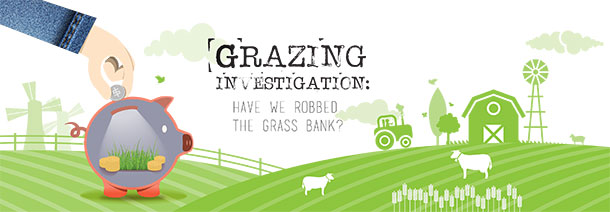
3. Grazing investigation: Have we robbed the grass bank?
Published Jan. 2
If you had a solar-powered fence energizer and you put duct tape on about half of the panel, the output would drop, right? Pretty soon the cows would catch on, and you’d get calls from the neighbors. Author Glenn Shewmaker (University of Idaho forage specialist) says the same thing happens when we remove too many leaves from pasture plants (or graze too closely). In essence, grazing too closely reduces the photosynthetic process and robs plants of energy storage. His research measured light response for orchardgrass cut to 4, 7 and 13 inches, which supports the claim that forage is not wasted when grazed to 3 to 4 inches of stubble height.
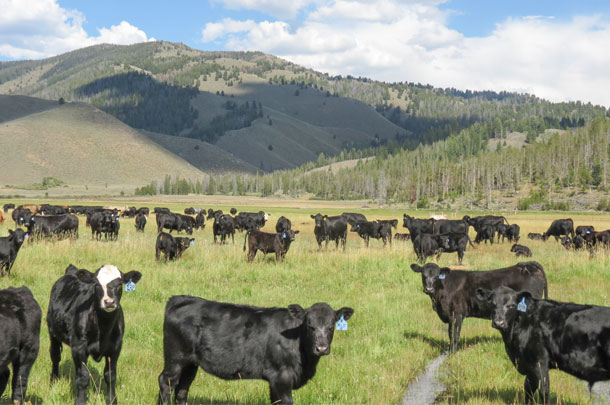
4. 3 ways to set your pasture up for failure
Published Aug. 13
Follow-up question for Steve Fransen: You mentioned three pasture management practices "that should end today" (applying nitrogen in the fall, fertilizing without soil testing and grazing below 3 to 4 inches). Which is the most damaging practice?
All will cost livestock and hay producers, but all for different reasons. It’s really tough to say which is worse because if we over apply N in the fall, then water soluble carbohydrates will be lowered in the stubble, and this will also stimulate new above-ground growth (as long as it is warm enough for growth); then in combination with a severe arctic blast, you have nearly instant winterkill.
Once the plants are dead, which will likely show up in the spring when we are looking for new green growth, if we think back, that blast was the last straw, but we set that in motion before the blast came down from the north.
Now, for the fertilizer, depending on what the producer has done in the past and how well they observe the animals and pastures, without the soil test most guys are shooting from the hip! More often than not, they’ll apply N because that is the least costly nutrient and they know they’ll see some quick results. But is it the P, K and S that make a big difference? More recently, I’m seeing more issues with Mg (grass tetany) and Ca (milk fever) in the spring because those nutrients are also in short supply. Then the entire issue of growing the new apical meristems in the fall, which is essentially next year’s production, is not promoted by not fertilizing in the early fall.
Finally, the stubble height is really a year-round issue. Even when the grass pastures look dead in the winter, those stubble sugars are important. The same is true in the spring, summer and fall. This is the plant’s bank account of energy, so grazing it down to the soil level will greatly delay spring root initiation and new growth, and reduce the duration and height of the flush period and overall pasture production the following year. Notice again, the results are into the future.
So all three issues are important but, as you see, for different reasons. Each will cost, and there may be some synergies among them, but we’ve never tried very hard to integrate those.

5. Calf tagging: Motivation for a head-slinging cow
Published April 3
Follow-up question for author Kari Lynn Dell: Your humorous blogs of ranch life are popular among readers. What’s one thing your readers don’t know about you?
Although I was raised and now live on the family ranch, I’ve actually had several non-agricultural careers. The first was college, but the pay was lousy, so I finally got a Bachelor of Science degree in secondary education and became a certified athletic trainer. I taught biology to ninth graders for a single year in Grand Prairie, Texas (they chewed me up and spit me out in record time), worked as a high school athletic trainer for a dozen more in Aberdeen, South Dakota, and Pendleton, Oregon, then became a life and health insurance agent, followed by a medical coder and biller. Now I’m a writer and once again a ranch hand, with a great appreciation for my mountain view and being able to wear the same jeans for eight days running.
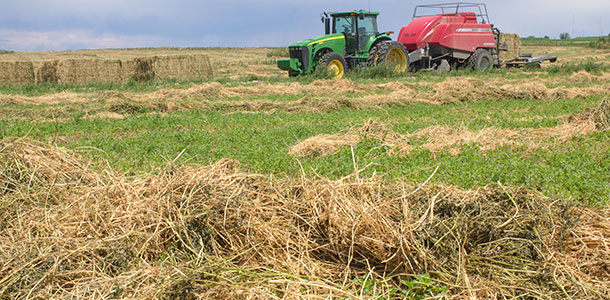
6. Losses from rain damaged hay unpredictable
Published July 16
Follow-up question for author Bruce Anderson (University of Nebraska – Lincoln forage specialist): How can rain damage risk be minimized?
Try to cut when weather forecasts suggest good drying weather, and get cut hay off the field as soon as possible. Use mechanical conditioners, wide windrows, tedders, etc., to dry hay most rapidly. If that is not sufficiently fast, use preservatives correctly to bale at moisture levels that normally would be too high to store safely. Bale wrappers are becoming increasingly popular for making baleage at many moisture levels. Of course, using grazing to harvest forage instead of cutting hay often is the most economical solution for operations that use both options.
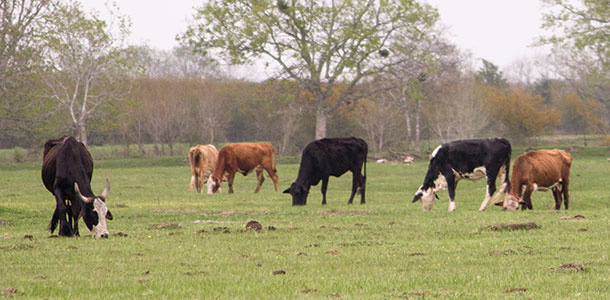
7. Make pasture fertilizing pay by using grazing management
Published March 16
Follow-up question for author Bruce Anderson (University of Nebraska – Lincoln forage specialist): What about using legumes instead of nitrogen fertilizer?
Wherever forage legumes are well adapted and can be established and maintained reliably, long-term economics usually favor their use instead of nitrogen fertilizer. Irrigated or semi-humid regions where soils are not too acidic, saline or otherwise too limited for economic amendment usually can support good legume growth. Adding legumes to existing grass-dominated pastures usually results in lower production during the legume establishment phase, so this needs to be done during years with adequate moisture. Proper grazing management is as important to the establishment and maintenance of successful legume-grass mixtures as it is for economical use of fertilized grass pastures.
8. Without warning: Strategies for drought
Published Feb. 4
Follow-up question for author Bruce Anderson (University of Nebraska – Lincoln forage specialist): What are some strategic pre-drought actions that can make adjusting to drought easier and less painful?
The same three categories for adjusting during drought – livestock inventory, efficient use of existing forage resources and developing alternative forage supplies – also can be used to mitigate the effect of drought before it happens.
Develop a livestock herd that has resilience and flexibility. Regularly use some animals that can be quickly removed from the herd without causing harm to the primary enterprise – retaining extra yearlings can be one example. Also have the herd composition contain some animals that can remain healthy and productive on lower quality and quantity of feedstuffs. Sheep, goats and even lower maintenance beef cows can fill this role.
Efficient use of existing forage resources begins with knowing what resources you have available. Periodically estimate how long your pastures and other forages would last if you received no more rain. This will prepare you to make other decisions on a timely basis. Keep your pastures as drought resistant as possible by providing pastures adequate time to recover following grazing events. Healthy, deeply rooted pasture plants will withstand drought conditions better than overgrazed pastures. Also develop adequate livestock watering facilities before water demand becomes critical. If mechanically harvested forages are often fed, develop a system that will minimize the amount of hay or silage that is wasted.
Use some alternative forages on a regular basis to understand how they fit your system. Plant cover crops that could be used as forage if needed. Develop a list of seed suppliers, supplement providers or other forage resources so you can rapidly access their products when needed.
9. Mower-conditioner types for quality hay
Published March 17
Follow-up comments from author Jordan Milewski (New Holland):
When it comes to haymaking, we pay entirely too much attention to the weather.
That’s a pretty bold statement! Well, it’s just this haymaker’s perspective, and I agree it is outlandish to say such a thing. Of course, we all know how important good weather is, but we cannot control the weather. All we can do is hope for a few good days, then plan to work around the forecast.
Other than controlling when we mow, we can also control the mower-conditioner’s settings. Unfortunately, we don’t give this harvest linchpin the attention it deserves. A question I like to ask groups visiting New Holland’s plant is, “How many adjustments does a roll conditioner have?” There are always a few who answer correctly, but regrettably most do not. So if you have a machine with chevron rubber rollers (a New Holland, of course), these recommendations are for you. However, if you own another brand, steel rolls or another roll design, don’t be dissuaded, as these fundamentals apply nearly universally.
Roll timing
To make this adjustment, you will need to loosen the hardware on the upper roll driveshaft, which allows the upper roll to turn independent of the lower roll. Turn the upper roll to provide equal clearance on either side of the lugs relative to one another. This equal clearance between lugs is essential to ensure stems are crimped without excessive shattering. If the roll timing is set incorrectly, the roller lugs may touch, greatly increasing power requirement, roll wear and crop losses.
Roll gap
Adjust the roll gap to a setting just slightly smaller than the average thickness of crop stems. While the traditional roll gap setting for alfalfa is approximately one-sixteenth to one-eighth inch, it’s important to set this based on your crops. When harvesting finely bladed grass crops, it’s typical to adjust the rolls more closely. Take care never to allow the rollers to touch. Adjust the rolls to be parallel with each other, and use an appropriately sized roll pin punch or feeler gauge to check the gap. Gauge the rolls at each end as well as the middle of the rolls to ensure they are parallel. Turn the rolls 180 degrees, and then double check to be certain the gap has been set properly.
Roll pressure
Determine roll pressure settings by considering the volume of crop passing through the conditioner. Keep in mind that this will vary throughout the season. When yields are at their peak, use increased roll pressure. Lower yielding harvests require less pressure to provide adequate conditioning. To find the proper setting, adjust the pressure gradually until you are crimping and cracking stems without causing excessive bruising of the leaves. Remember that excessive bruising may cause unacceptable leaf shatter loss, which reduces your tonnage and forage quality. It’s essential to remember to readjust roll pressure between fall and spring seasons.
The importance of keeping the knives sharp, lubricating the drivelines and maintaining the gearboxes is well known. However, when was the last time you took a good look at your conditioner? I hope this article inspires your next rainy day project. Remember to always refer to your operator’s manual for complete details on adjusting your specific mower-conditioner.
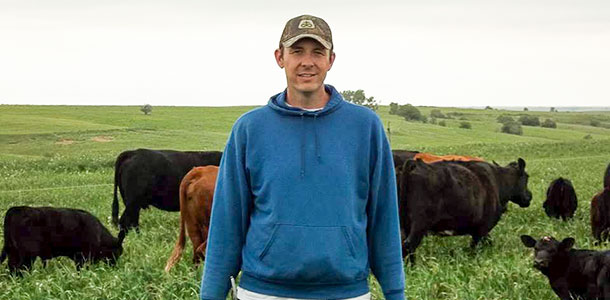
10. Kansas producer makes more of less with cover crops
Published Feb. 16
Follow-up question for Kansas producer Michael Thompson: What cover crops did you plant this fall, and has your management changed?
We have obtained more cattle this year. This decision was made due to the fact we have more grass and cover crop to graze, and we had range and cover crops that never did get grazed last year. We saw some timely rains this year, and that helped our native range grow. We planted a warm-season mix of millet, sorghum sudan, cowpea, soybean, diakon radish and forage rapeseed; this was planted into wheat stubble that we are grazing this fall and winter. We also have been planting rye, triticale, rapeseed and winter peas after corn for spring grazing. I have been using the Haney soil test and Solvita CO2-Burst test to scale back on the fertilizer we apply to our cash crops following our grazed covers. We are able to scale back on fertilizer as our organic matter increases and the number of microbes in the soil increases due to the cover crops and our grazing.
We continue to run our herd as one large group and rotationally graze our pastures and cover crops. I am sold on the changes we are seeing with high stock density and want to do more with polywire and step-in posts on our range next year.
Another big accomplishment was we were able to buy the land my great-great-grandfather homesteaded. I look forward to the challenge of building the soil and rangeland into something that honors the five generations before me. This truly has been a profitable and fun way to farm and ranch. If you focus on the soil and treat it right, it will provide for you! FG










